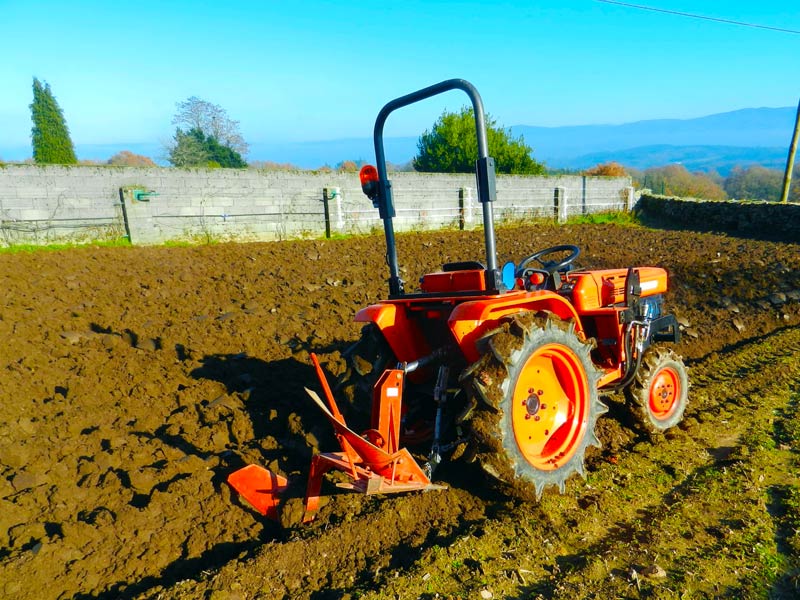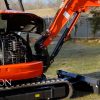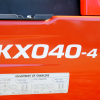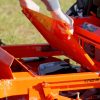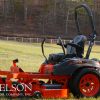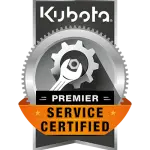With the last of the snows blowing through and the ground starting to soften up, it’s time to get down and dirty. There’s nothing like sticking your hands in warm dirt, is there? Whether you’re thinking about a small plot to feed the family or full-scale commercial farming, using the attachments available for your tractor will make your life easier.
How you prepare your fields depends heavily on the terrain, the composition of the soil, and what the field was used for in the past. Here are the most common and useful garden implements available for compact tractors.
Disk Harrow
If you’re working with land that has not been used as a garden in the past, you’ll need to prepare the land. While moldboard plows are most common in the north, here in the south, disk harrows are the more popular for primary tillage. Disk harrows are implements with round, concave disks set in rows, and they are available in several styles: single, tandem and offset, and four to six feet wide.
For compact tractors, the most common style is a tandem harrow with four arms, or “gangs.” Each gang has four disks attached. The disks dig into the ground and throw up soil, using weight, diameter, and spacing to determine the depth.
Plow
A plow, or moldboard, is a curved tillage tool that slices into the ground, pulls the ground up and turns it over to make the furrows every farmer is familiar with. The plowing process breaks up compacted soil, leaving it loose and friable, and buries vegetation and compost on the surface to add nutrition quality to the topsoil.
Fun fact: In the early 1800s, farmers used heavy cast iron plow blades. They frequently had to stop working to scrape mud off the blade. In 1837, a blacksmith fashioned the first polished steel blades much like those we still use today. The blacksmith who revolutionized plowing was John Deere.
Rotary Tiller
Rotary tillers cans be used for primary tillage or to break up dirt clods after plowing. For compact tractors, you can buy a rotary tiller in widths of 3 to 5 feet and may be centered or offset to the side. Rotary tillers have rows of tines that dig into the soil from an inch or two deep up to about nine inches. They are connected to the gearbox and powered by the PTO shaft, and most have a hinged flap on the back that drags the ground to level the tilled soil.
Spreader
Two types of spreaders are available for compact tractors with a 3-point hitch, rotary and pendulum action. While rotary spreaders are generally less expensive, they require more adjustments an produce an uneven elliptical pattern, while pendulum spreaders offer a symmetrical spreading pattern with little adjustment for different types of product, whether you’re spreading fertilizer or seed. The swing motion spreads an even row on each side as you drive down the rows
Sprayer
Unless your goal is an organic garden, you’re most likely to use pesticides. A sprayer made for compact tractors is a simple device, with a tank mounted on a boom sprayer attached to the 3-point hitch. Trailer sprayers are also available. Most commonly, the sprayer pump unit is connected to the PTO. The boom is equipped with many nozzles for wide coverage, and the sprayer can be used to apply herbicides, fungicides, insecticides, and liquid fertilizers. The boom can be customized by changing nozzles for different products, blocking some nozzles of to change the spacing, and changing the height of the boom.
Your compact tractor is capable of an unlimited number of tasks. Other implements you may need for farming include a rotary cutter and a stump grinder to clear fields before tilling, and a post hole digger to build a fence. You can use your bucket loader to move mulch and compost, and a blade to spread it over your land prior to tilling. If something needs to be done on a farm, we have a compact tractor accessory designed to get the job done!
References:
LSU AgCenter Implements for Compact Tractors
John Deere Compact Tractor Tips Notebook


